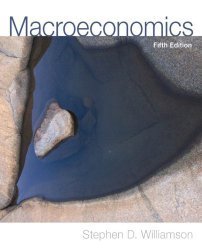Macroeconomic Theory: Course Readings
 Tonight was spent gathering all the course readings for the first course I'm tackling in my M.S. in applied economics project, which really needs a shorter name. M.S.A.E.P? A.E.P.? Let's just call it the A.E. Project for now.
Tonight was spent gathering all the course readings for the first course I'm tackling in my M.S. in applied economics project, which really needs a shorter name. M.S.A.E.P? A.E.P.? Let's just call it the A.E. Project for now.Back to the course readings.
Each week is comprised of one or more chapters from the course textbook, as well as an additional one to three articles. I was able to purchase the Kindle version of the textbook with the GoFundMe donations I received this week. In fact, the donations paid for the entire cost of the book, which was awesome. So thank you to everyone who donated. Below is a picture and link to the course textbook if you'd like to check it out. It will be the main source of information while I study macroeconomics.

 I was also able to download or locate all of the additional articles via a regular ol' Google or Google Scholar search for no extra cost and little extra time. So without further ado, below is the entire course readings for the online version of the Macroeconomic Theory course from the Course Syllabus Archive page on John Hopkins University's website. The Course Syllabus Archive page is the lifeblood of this project and the central reason that John Hopkin's M.S. was chosen and not some other school's.
I was also able to download or locate all of the additional articles via a regular ol' Google or Google Scholar search for no extra cost and little extra time. So without further ado, below is the entire course readings for the online version of the Macroeconomic Theory course from the Course Syllabus Archive page on John Hopkins University's website. The Course Syllabus Archive page is the lifeblood of this project and the central reason that John Hopkin's M.S. was chosen and not some other school's. Weekly Readings (Chapters Are from Textbook)
Ch. 1-3 (skim), Ch. 4, “The Macroeconomist as Scientist and Engineer,” Mankiw Ch. 8, “Convergence in Macroeconomics: Elements of a New Synthesis,” Woodford Ch. 10 (p. 338-372), “The Other Worldly Philosophers,” The Economist, “In Defence of the Dismal Science,” Lucas Ch. 10 (p. 372-389), “Macroeconomics after the Crisis: Time to Deal with the Pretense-of-Knowledge Syndrome,” Caballero Ch. 11 (skip p. 402-409), “How Debt Markets Have Malfunctioned in the Crisis,” Krishnamurthy Ch. 12, p. 439-460, “Real Business Cycles: A New Keynesian Perspective,” Mankiw Ch. 13, “Modern Macroeconomic Models as Tools for Economic Policy,” Kocherlakota Ch. 18, “How Complicated Does the Model Have to Be?” Krugman Ch. 17, “Economic Effects of the Unemployment Insurance Benefit,” Fujita Ch. 6, p. 190-214, “Malthus, The False Prophet,” The Economist, “The Growth of Growth Theory,” The Economist, “The Joyless or the Jobless,” The Economist Ch. 6, p. 214-235, “Solow in the Tropics,” Toye Ch. 7, “Goodbye Washington Consensus, Hello Washington Confusion? A Review of the World Bank’s Economic Growth in the 1990s: Learning from a Decade of Reform,” Rodrik
That's it. Doesn't really seem like much when it's all laid out like this, but I'm sure this will be quite a challenge. Of course, there are also problems to solve after each chapter reading, which is where many students get stuck in traditional classes.
 Help fund the textbooks required for this project. I've already purchased the first textbook using only the donations received. Any amount is much appreciated, even a single dollar.
Help fund the textbooks required for this project. I've already purchased the first textbook using only the donations received. Any amount is much appreciated, even a single dollar.The total cost for all the textbooks in this project is US$1,936. Most are near $200.
Published on December 17, 2014 05:19
No comments have been added yet.



